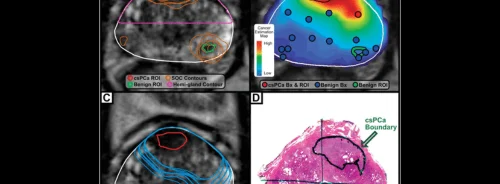HealthManagement, Volume 6 - Issue 4, 2006
A Multidisciplinary Approach
Author
Prof. Istvan Battyani
Chairman of the
Department of Radiology
Faculty of Medicine,
University of Pecs
Pecs, Hungary
In South-west Hungary, three years ago, a regional imaging research programme was commenced within the framework of the European Development Programme entitled “Management of Human Resources 4.3”. It was created using both funding from the University of Pécs as well as significant financial support from the European Community.
Aim of the Project
The aim of this project was the establishment of a multidisciplinary screening and diagnostic centre of preventive medicine. While mortality rates in Hungary remain among the highest in Western Europe, in the first phase actualised valid data of morbidity were the expected result. In parallel with the existing project to improve the health services in Pécs another project was defined for the integration of the different hospitals and outpatient ambulatory systems. Scientific analysis and follow up of health indicators in the second phase were designed to prove the effectiveness of integrated health services. The outcome of the research and management project is expected to show disease prevalence based on more effective patient management. The estimated improvement of health indicators in this way is 5 - 10% in five years, without increasing costs, or even using less expensive medical care.
How the Project is Set Up
The screening programme consists of running both standalone and mobile diagnostic units including first line digital chest X-ray, digital mammography, clinical screening of cervical cancer, visual defects, musculoskeletal diseases, gastrointestinal bleeding, cardiac and vascular disorders. Second line diagnostic procedures are supported by full spectrum imaging modalities, from US to interventional radiology. The infrastructure is based on new equipments, like 64 slice MDCT, flat panel chest and breast x-ray and ultrasonography, including echocardiography, vascular ultrasound and high resolution probes.
Rotation DSA offers 3D angiography and is related to early diagnosis of cases leading to more cost effective interventional therapy. The mobile unit is in a truck with digital chest and breast Xray, medical office, gynaecological instruments, blood sampling, and a table to view visual defects.
Management of the Centre
Management of the diagnostic centre is integrated in the University and coordinated with respon- sible leaders from the city and county. Management of the radiology service of the diagnostic centre is integrated within the department of radiology, led by the Chairman.
Management of the screening programme organised by the preventive workgroup, consists of representatives of all disciplines led by an administrative coordinator. The project manager is independent of the University. Inter-departmental challenges related to collaboration in the diagnostic screening centre have beneficial effects on medical teams of different disciplines working together. There is no doubt that these coordinated efforts bring colleagues together. This promotes collaboration in regular daily workflow as well.
Quality Control and Budgeting
Quality control and auditing is carried out within the framework of the University’s general rules. Special reports to EC Council are required also, including coordinated plans for organising internal and external screening visits. In this system well organised multidisciplinary collaboration is required. The budget from the EC-supported regional screening programme is allocated only for investments, meaning that running costs have to be covered by regular reimbursement from health insurance.
Screening activity itself is not limited administratively by the health service on one hand, but no additional financial reimbursement is available on the other hand. While an increasing number of early diagnosed patients resulted from effective screening, the reimbursement volume in Hungary is decreasing.
Benefits for Undergraduates
The education of undergraduate students benefits from the existence of this diagnostic centre. A very important lesson for them that will hopefully filter through the next generation of radiologists, is that a preventive attitude has to be highlighted versus a conventional curative attitude. therapy for less expensive costs and offers better quality of life for patients after therapy. Information technology like PACS, RIS and HIS within the University of Pécs is already complete, and web based teleradiology (AccessNet, Aspyra) is available for hospitals in the area.
Expansion of the PACS will promote an integrated healthcare service for the region. Medical safety considerations in screening have high importance. Modern equipment offers technical regulatory functions for dose reduction in general, but special low dose techniques especially for screening programmes are already safe. The majority of Hungarian radiological departments use nonionic contrast media.
Conclusion
The future of the project is dependent on a solid reimbursement structure, depending on international scientific collaboration and publications. In this respect we have developed trilateral scientific activities, as well as collaborations with other University Medical Centres. Numerous international studies are running in the Department, focused on thrombotic vascular diseases and oncological treatments. Each of these collaborations increases the modernisation of our healthcare system in Hungary and cements the future development of this major national project.





